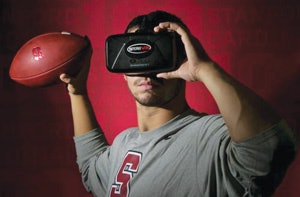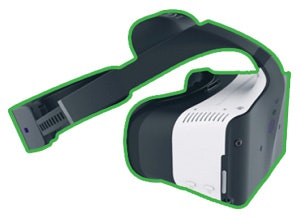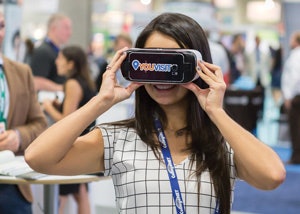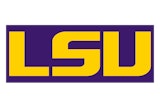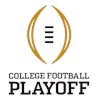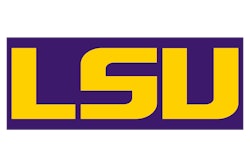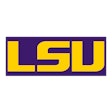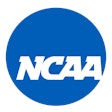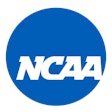![[Photos courtesy of Michigan Athletics and Shutterstock]](https://img.athleticbusiness.com/files/base/abmedia/all/image/2017/05/ab.VR517_feat.png?auto=format%2Ccompress&q=70&w=400)
Virtual reality is taking college campuses by storm. VR is being utilized as a recruiting tool in a variety of applications — from virtual tours of facilities to virtual point-of-view experiences such as a day in the life of a football player on gameday. If you want a recruit to experience your brand-new facility and what it would look like relaxing in that world-class student-athlete lounge, you can create a VR experience for that, too. That potential recruit can get a near-real-life look at your facility without ever having to leave his or her own home.
 Scott Schroeder is director of visualization for Denver-based architectural firm Sink Combs Dethlefs.
Scott Schroeder is director of visualization for Denver-based architectural firm Sink Combs Dethlefs.
VR experiences are not limited to showing facilities that already exist; they can also show spaces that have not yet been built. Concepts and renderings can be transformed into VR to generate interest and donor support. Potential donors can even experience the exact view from their exact seat in a newly proposed basketball arena, all in a VR experience sent via email link.
VR in perspective
There are quite a few VR headsets on the market today, including Google Cardboard, Samsung's GearVR and Google Daydream, to name a few. However, the basic design principles used in these devices has been around since 1838, when Charles Wheatstone invented the stereoscope. Virtual tourism has been around since 1939, thanks to the View-Master created by William Gruber.
RELATED: Virtual Reality’s Role in the Future of Sports
Today's VR headset experiences can be broken down into two categories: mobile and tethered. A mobile headset can be thought of as any headset that uses a mobile phone to display the VR content. These headsets are easily portable and fairly inexpensive. In the case of the Google Cardboard, the price is low enough to be used as a downright giveaway.
Tethered headsets are those headsets that have wires connecting them to a PC, which runs the VR content. In the near future we may start to see wireless versions of these headsets, but even without wires, users will still need a powerful PC or laptop to display the VR content. By their nature, tethered headsets are less mobile and more expensive than their wireless cousins.
How does content get into a VR display? Two of the most common ways are capturing the existing environment using a 360-degree camera rig, or if the environment does not yet exist, using a VR-capable rendering. While rendering an environment that does not yet exist in the real world can be considered a specialized skill, capturing environments that already exist has been made easier by an influx of 360-degree cameras available for anyone to purchase. These cameras can be a relatively inexpensive investment, depending on the chosen camera. Some can only capture photos while others can capture video as well.
A much more complex and specialized way to create a virtual environment is to use video game engines, similar to the way many of today's hottest video games are created. Another complex but more practical way is to use a camera that can dynamically scan the environment and translate that into a format that can be viewed in VR. The downside to this method is that this camera scanning technique can only be used on environments that already exist.
More from AB: Michigan First School to Use Virtual Reality in Recruiting, Fan Engagement
Bright (virtual) future
VR can be a powerful tool to generate interest and allow a person to explore an environment without actually having to physically travel to that environment. The technology still has some shortcomings, but the industry as a whole has a positive outlook. As the technology develops and the quality of displays improves, as phones become more powerful, and as developers understand how to better showcase content in VR, we will see VR become a far more comfortable proposition for the mass public in the very near future.
As the technology has become more commonplace, a few trends have started to emerge. Mobile is the preferred way to reach the widest audience. Just about everyone has a smartphone or tablet, so it makes sense to target that platform. The content that is created is also universal — if it can be viewed on a mobile phone, it can be viewed in any VR headset. That same VR-ready picture, rendering or video can be used in all applications — from a website to an app to a posting on social media — all with minimal effort. From a recruiting standpoint, an inexpensive Google Cardboard headset can be mailed to a recruit with a few simple instructions.
VR headsets such as Oculus Rift and HTC Vive offer a more immersive experience, but lack the ability to reach the mass public in the same way mobile-phone-based VR headsets can. In terms of college recruiting, the recruit would still have to travel to your campus and go to a special room with the VR headset. Another option is to bring the VR headset and accompanying technology to the recruit and set it up in their living room.
VR technology has been around for 179 years, but recent innovations making it more accessible mean VR development is just now finding its stride. There remain a few hurdles. Currently, the lack of industry standards makes it hard for content developers to create VR experiences as a whole. For mass public adoption, VR also needs to overcome some cost barriers and the effects of VR-induced motion sickness.
Why does the adoption of the mass public matter? Think of VR as being split into two similar but different development categories: VR as a sales tool for homes, new athletic centers, university visits, etc.; and VR for general public use such as video games, movies and virtual interaction with others.
For most readers of this article, VR as a sales tool should be the focus. This type of VR is much more controlled and targeted to a specific use. VR for sales is starting to become almost as important as the brochure with simple pictures in it. Granted, VR for sales still has to overcome the same barriers of initial startup costs and portability. But for now, for just a few dollars and the cost of postage, universities can send potential recruits their own VR headset and give them the campus experience without them having to leave their hometown.
KEY PLAYERSIn the same way VHS beat out Betamax and DVD battled the Blu-Ray, the future of virtual reality technology will be defined by the companies driving the innovation and attracting early adopters. Here are companies that have become major VR players in the past year:
NextVR
Eon Sports VR
StriVR
Intel
YouVisit
Jaunt — Emily Attwood |
This article originally appeared in the May 2017 issue of Athletic Business with the title "Virtual reality: Game-changing technology for college athletics" Athletic Business is a free magazine for professionals in the athletic, fitness and recreation industry. Click here to subscribe.











